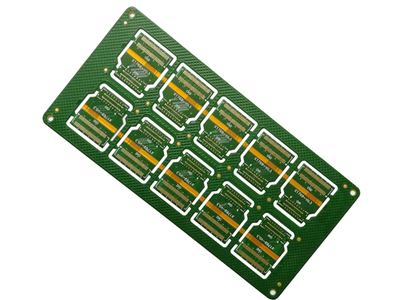In the dynamic realm of electronic design and manufacturing, the advent of flexible rigid printed circuit boards (PCBs) marks a significant milestone, embodying a perfect blend of innovation and practicality. These marvels of engineering not only epitomize the progress in PCB technology but also set a new standard for versatility and reliability in electronic components. This comprehensive exploration delves deeper into the design intricacies and material finesse that position flexible rigid PCBs as the backbone of modern electronics, offering a closer look at the nuanced methodologies engineers employ to merge flexibility with strength seamlessly.

The inception of flexible rigid PCBs was driven by the burgeoning demand for more resilient and adaptable electronic solutions across various industries. As devices became increasingly compact and complex, the limitations of traditional PCBs—either strictly rigid or entirely flexible—became apparent. Rigid boards couldn't conform to the contours of innovative product designs, while flexible circuits lacked the structural integrity to support heavier components or withstand harsh operational conditions.
Enter the flexible rigid PCB: a hybrid that promises the best of both worlds. This innovation was not merely a step forward but a leap towards redefining electronic design paradigms. It catered to the aerospace sector, where equipment faces extreme conditions, and the consumer electronics market, where the thirst for sleek, durable gadgets continues to grow. The development of flexible rigid PCBs was a response to these challenges, a testament to the ingenuity of engineers seeking to harmonize the contradictory demands of flexibility and robustness in electronic circuits.
The architectural elegance of flexible rigid PCBs lies in their composite structure, which strategically integrates rigid and flexible layers into a single entity. This hybridization is not merely about juxtaposing two different materials; it involves a sophisticated design process where each segment is carefully planned to fulfill specific functional requirements. The rigid areas provide a sturdy foundation for mounting heavyweight or heat-generating components, ensuring the PCB's overall structural integrity. Conversely, the flexible segments offer the much-needed adaptability, allowing the board to bend or fold, thereby enabling a new dimension of design possibilities for electronic devices.
This unique architecture demands meticulous attention to detail. For instance, the transition zones between the rigid and flexible parts are areas of particular interest. These zones must be engineered to withstand mechanical stress without compromising the electrical connectivity. Achieving this requires innovative layering techniques, where the materials used in the flexible sections must bond seamlessly with the rigid parts, ensuring a smooth transition that can tolerate bending and folding.
Material selection is critical in this regard. The rigid sections often utilize materials known for their durability and thermal stability, such as FR4 or high-performance resins. Meanwhile, the flexible layers typically employ polyimide or polyester films, chosen for their exceptional flexibility and heat resistance. The challenge lies in ensuring these materials not only coexist but complement each other, maintaining the PCB's integrity under various operational conditions.
The design of flexible rigid PCBs also considers the electrical performance. Conductive paths are carefully plotted across both rigid and flexible areas to ensure seamless signal transmission. This involves sophisticated routing techniques and the strategic placement of vias to maintain signal integrity, especially where the PCB bends or folds. The goal is to ensure that the flexible nature of the PCB does not compromise its performance, a task that requires a deep understanding of both electrical engineering principles and the physical properties of the materials involved.

Diving deeper into material science reveals the cornerstone of flexible rigid PCBs' success. The engineering of these boards is a delicate balance between selecting materials that can endure the mechanical stresses of bending and those that can support the electrical requirements of modern electronics. The integration of these materials is a sophisticated process, involving not just the choice of substrate but also the adhesives used to bond different layers, the conductive inks for printing circuits, and the protective coatings to shield against environmental factors.
Polyimide stands out in the realm of flexible materials for its high thermal stability and excellent electrical properties. Its ability to withstand continuous operation at elevated temperatures while maintaining flexibility is unparalleled. For the rigid components, advancements in resin technologies have led to the development of materials that offer improved mechanical strength and thermal conductivity, enhancing the PCB's overall performance.
The manufacturing process, too, is a testament to the precision engineering behind these PCBs. It involves advanced techniques such as laser drilling for vias and microvias, precise control of layer alignment, and specialized etching processes to create the intricate patterns of conductive tracks. These processes are continually refined to increase the reliability and performance of the final product.
Flexible rigid PCBs represent a marvel of modern engineering, offering a blend of flexibility and strength that has revolutionized electronic design. Through careful material selection, precision engineering, and innovative thermal management, these PCBs meet the demands of a wide range of applications. As technology continues to evolve, the secrets behind the design of flexible rigid PCBs will undoubtedly inspire further innovations, continuing their legacy as a cornerstone of electronic manufacturing.
By continuing to use the site you agree to our privacy policy Terms and Conditions.